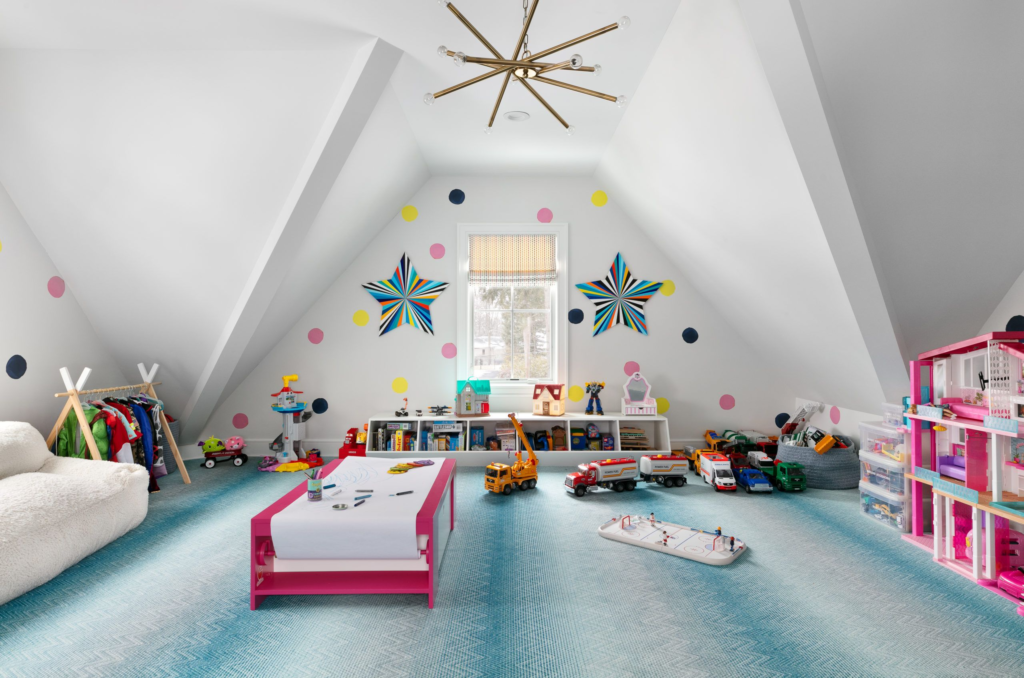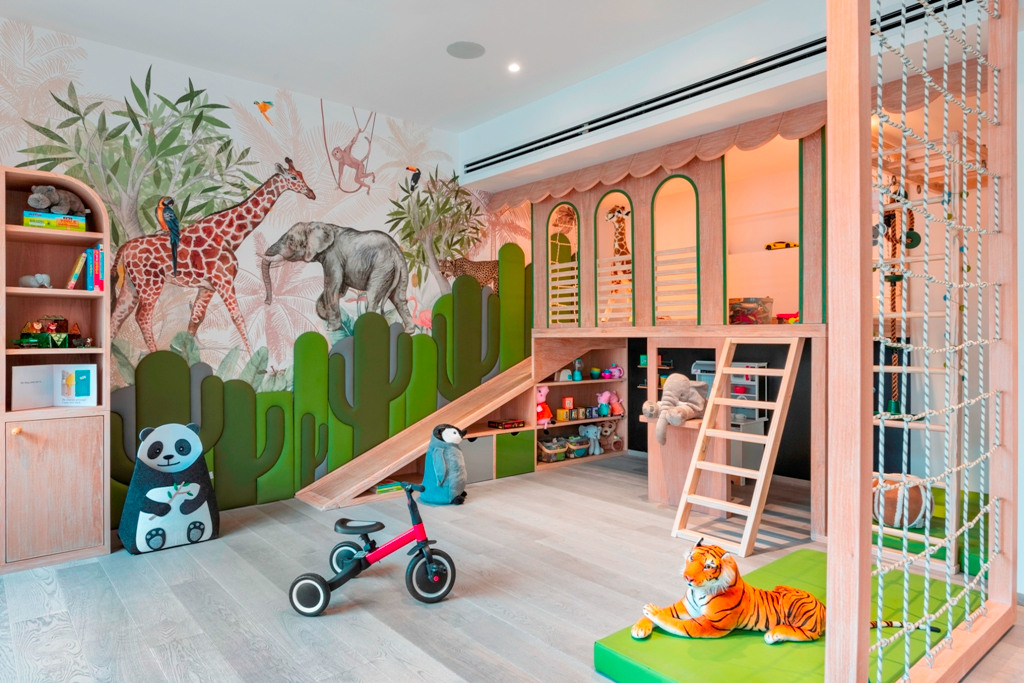How to Create a Playroom That’s Both Fun and Functional

Designing a playroom for your kids is an exciting opportunity to combine creativity, organization, and functionality. A well-planned kids’ playroom design can become a magical space where your children can learn, explore, and have fun, all while keeping your home organized. Here’s how you can create a playroom that’s both fun and functional.
1. Choose a Theme That Inspires Creativity

Kids love imaginative spaces, and a themed playroom can spark their creativity. Whether it’s a jungle safari, outer space, or a fairytale castle, choosing a theme adds a cohesive and playful element to the design.
Example:
For a jungle theme, use green tones, leafy wallpaper, and stuffed animals. Add a tent or treehouse-style bunk to complete the look.
2. Prioritize Safety First
Safety is paramount when designing a playroom. Use child-friendly furniture with rounded edges, secure heavy furniture to the wall, and opt for non-toxic paints and materials. Ensure electrical outlets are covered, and avoid placing breakable items within reach.
Interior Design Tip:
Install soft flooring, such as foam mats or carpets, to prevent injuries and create a comfortable play area.
4. Create Zones for Different Activities
Divide the playroom into zones based on activities to maximize functionality. For example:
Art Zone: Include a small table, chairs, and art supplies for creative projects.
Reading Nook: Add a comfy bean bag or cushions along with a low bookshelf.
Active Play Area: Leave space for physical activities like jumping or tumbling.
Interior Designing Idea:
Use rugs or colorful tape to visually define each zone in the playroom.
5. Optimize Lighting
Good lighting enhances the playroom’s ambiance and functionality. Use a mix of natural and artificial light to create a cheerful atmosphere.
Example:
Place the playroom near a window for natural light during the day, and add string lights or colorful lamps for a whimsical evening look.
6. Include a Flexible Workspace
A multipurpose workspace can serve as a desk for homework, puzzles, or craft projects. Opt for an adjustable-height desk to grow with your child.
Interior Design Tip:
Use a chalkboard wall or whiteboard to encourage creativity and learning.
3. Incorporate Smart Storage Solutions
A functional playroom must include ample storage to keep toys, books, and games organized. Use bins, baskets, shelves, and storage ottomans to create designated spots for each item.
Example:
Label storage bins with words or pictures to encourage kids to clean up after themselves. Consider using transparent bins so kids can easily find their favorite toys.
7. Add Interactive Elements
Interactive features can make the playroom more engaging. Consider:
A wall-mounted activity board.
A climbing wall for physical activity.
Magnetic boards or pegboards for building and experimenting.
Example:
Install a large world map or a mural with interactive stickers to encourage curiosity and learning.
8. Keep It Bright and Colorful
Children are drawn to bright and cheerful colors. Use a mix of bold and pastel shades to make the playroom inviting. However, avoid overwhelming the space with too many patterns or colors.
Interior Designing Idea:
Choose a neutral base color for walls and add pops of color through furniture, rugs, and wall art.
9. Use Multi-Functional Furniture
Space-saving furniture can make the playroom more practical. Look for pieces that serve multiple purposes, such as storage benches, foldable tables, or a daybed for nap time.
Example:
A bunk bed with a built-in slide or storage drawers can combine fun and functionality.
10. Add Personal Touches
Personalize the playroom to reflect your child’s personality. Display their artwork, hang family photos, or include toys and items that hold sentimental value.
Example:
Frame your child’s best drawings and hang them on a gallery wall to showcase their creativity.
11. Plan for Growth
Children grow quickly, and their needs change over time. Design a playroom that can evolve as they age by choosing furniture and decor that can be easily updated.
Interior Design Tip:
Invest in modular furniture that can be reconfigured as your child’s interests change.
12. Keep It Clean and Organized
A clutter-free playroom is more enjoyable and functional. Encourage your kids to clean up by making it easy and fun. Use color-coded bins or reward systems to instill good habits.
Example:
Set a timer for a 5-minute clean-up game where kids race to put away toys before the buzzer.
Final Thoughts
Designing a kids’ playroom that’s both fun and functional requires a balance of creativity, organization, and practicality. By incorporating these kids playroom design tips, you can create a space where your children can play, learn, and grow. Start planning today and give your kids a playroom they’ll love for years to come!